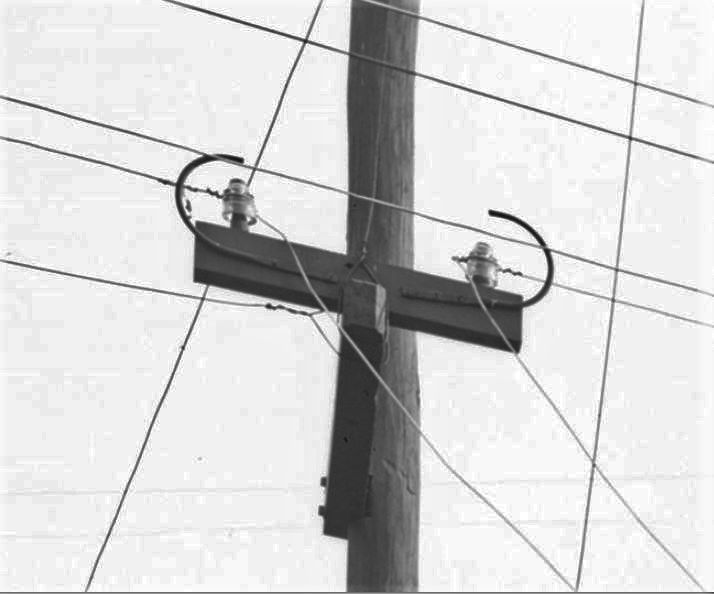Hingham Municipal Lighting Plant, 1916, Old 1890s Pole, 138.2s, Utility Standardization
By Joe Maurath, Jr.; posted July 9, 2020
View Original: Click to zoom, then click to magnify (714 x 594) 73KB

|
During 1915 the National Electric Lighting Association (NELA) was formed and basically its mission was to standardize electric utility line-building and the materials used. Up until then, such equipment varied from manufacturer-to-manufacturer and line building really did not have much rhyme or reason to it, often varying quite widely from one utility to the next. The original distribution lines were built using the basic concept of 1880s telegraph lines and with some trial-and-error. Owing to aging, the elements and the ever-increasing demand for electricity, new lines and poles were needed by the early teens. Many were built with little standardization; those that were, were done so using company-issued standards. By the mid-teens, most of the old poles were rotting away while the popularity of electricity was beginning to soar across the United States. Employing standards throughout the industry intended for safer and more reliable installations and service. Typically the bigger utilities were the first to commence such standardization. The suggested codes were optional as far as I know. By the 1920s when distribution lines were for the most part totally rebuilt across the United States, just about all pole-line streetscapes hardly resembled their early 1900s-and-earlier predecessors. Shown is a closeup view of an 1890s electric utility pole that was still standing in Hingham, Massachusetts in the mid-teens. Note the two CD 138.2 insulators. These were used by that town-owned utility in some quantities. I am not sure what the metal hooks on the ends of the crossarm were for. Possibly for "catching" the wire if it broke loose from its insulator? Of added interest and fun facts regarding the above utility...their year-end report stated that "During 1916, 53 new customers were added, bringing the year-end total to 821. The reported number of customer-owned lightbulbs in use was 19,472. Also connected to the town's system were 11 electric ranges, 5 rectifiers (used for charging automobile batteries) and 129 lightning arrestors protecting the customers and Light Plant equipment. A new Studebaker truck at a cost of $1,236 delivered replaced the Light Plant's aging, ill horse. It was stated that the horse was boarded at no cost to the department and still could be used for light duty tasks if needed. |